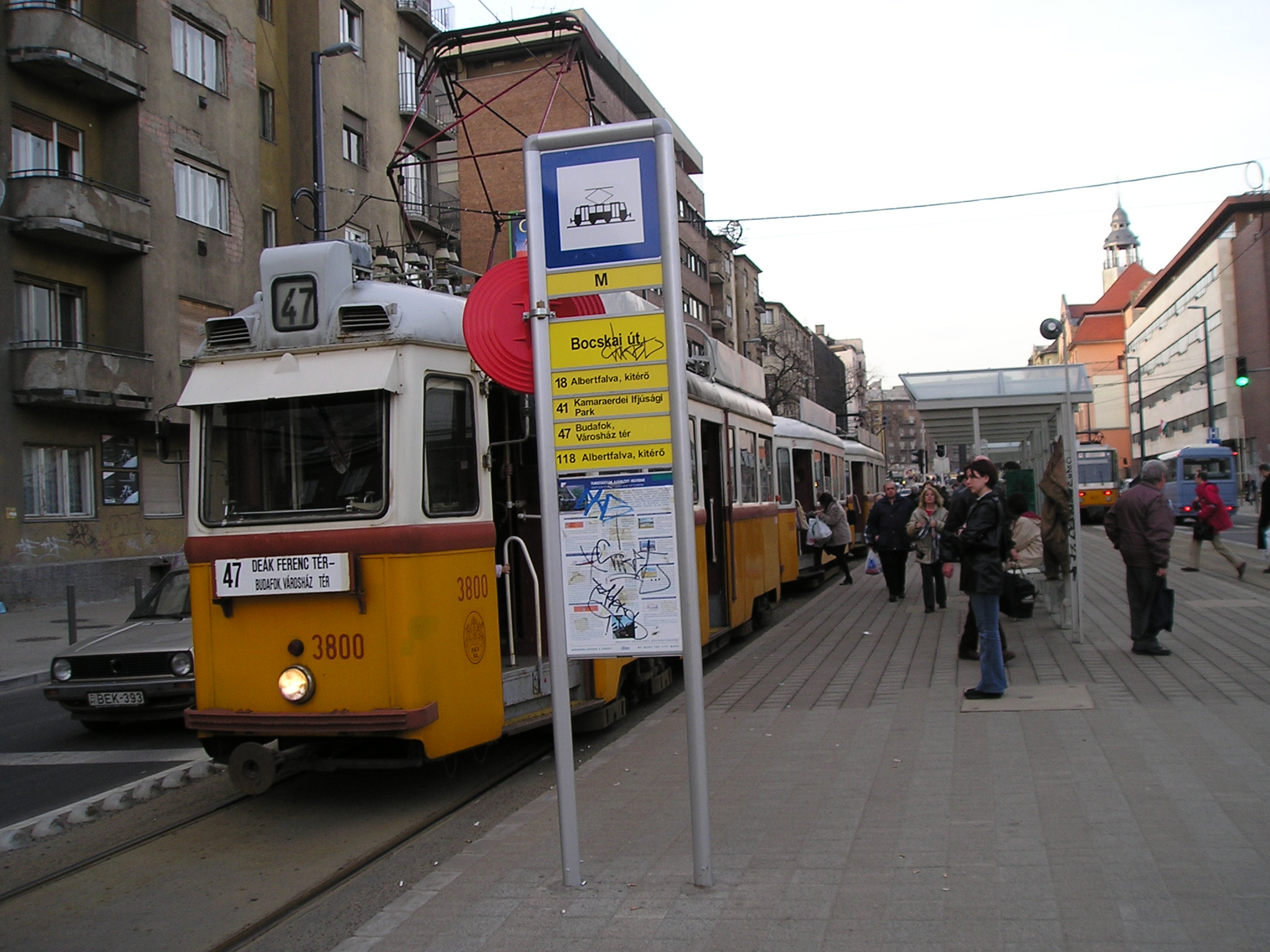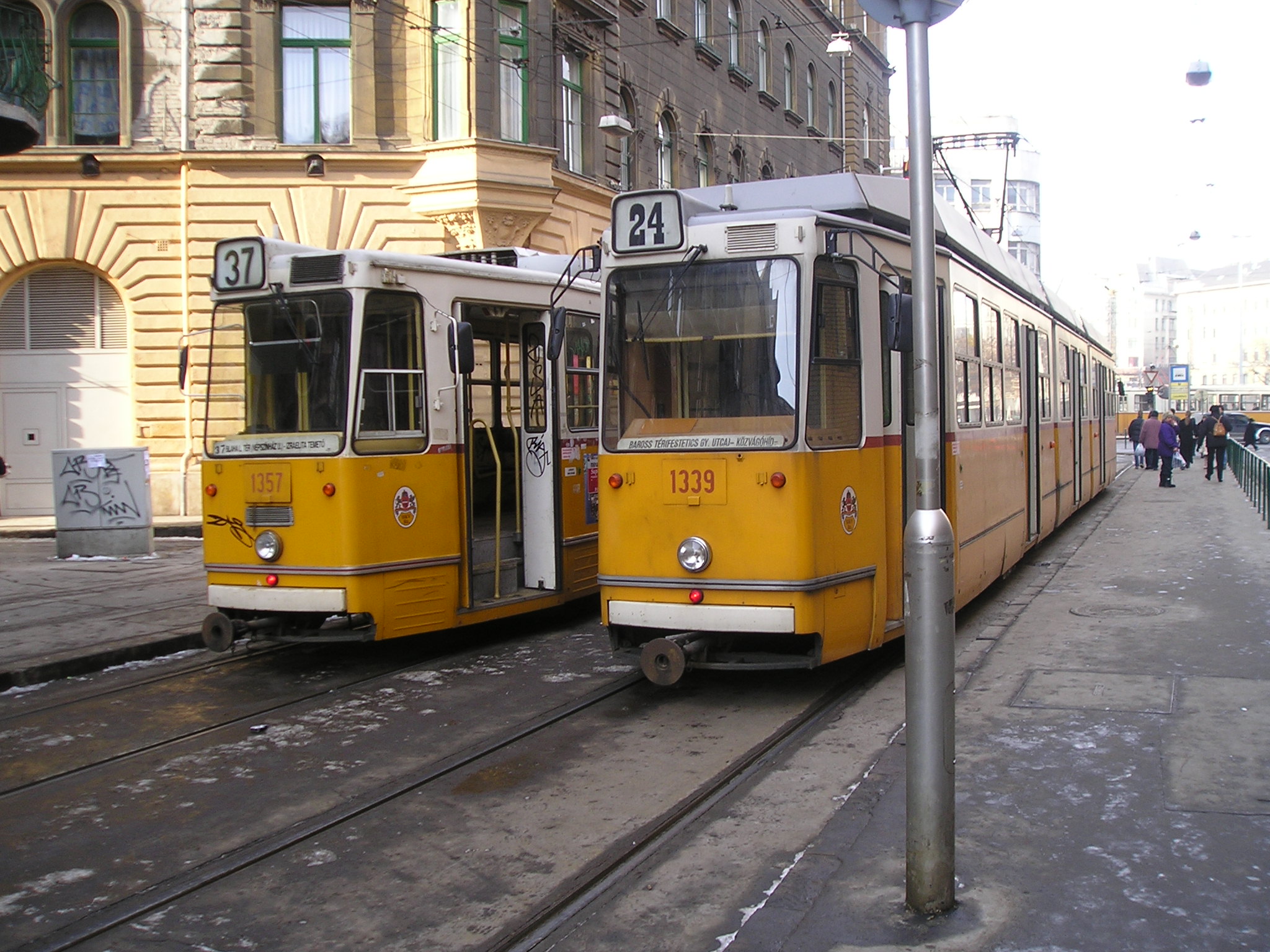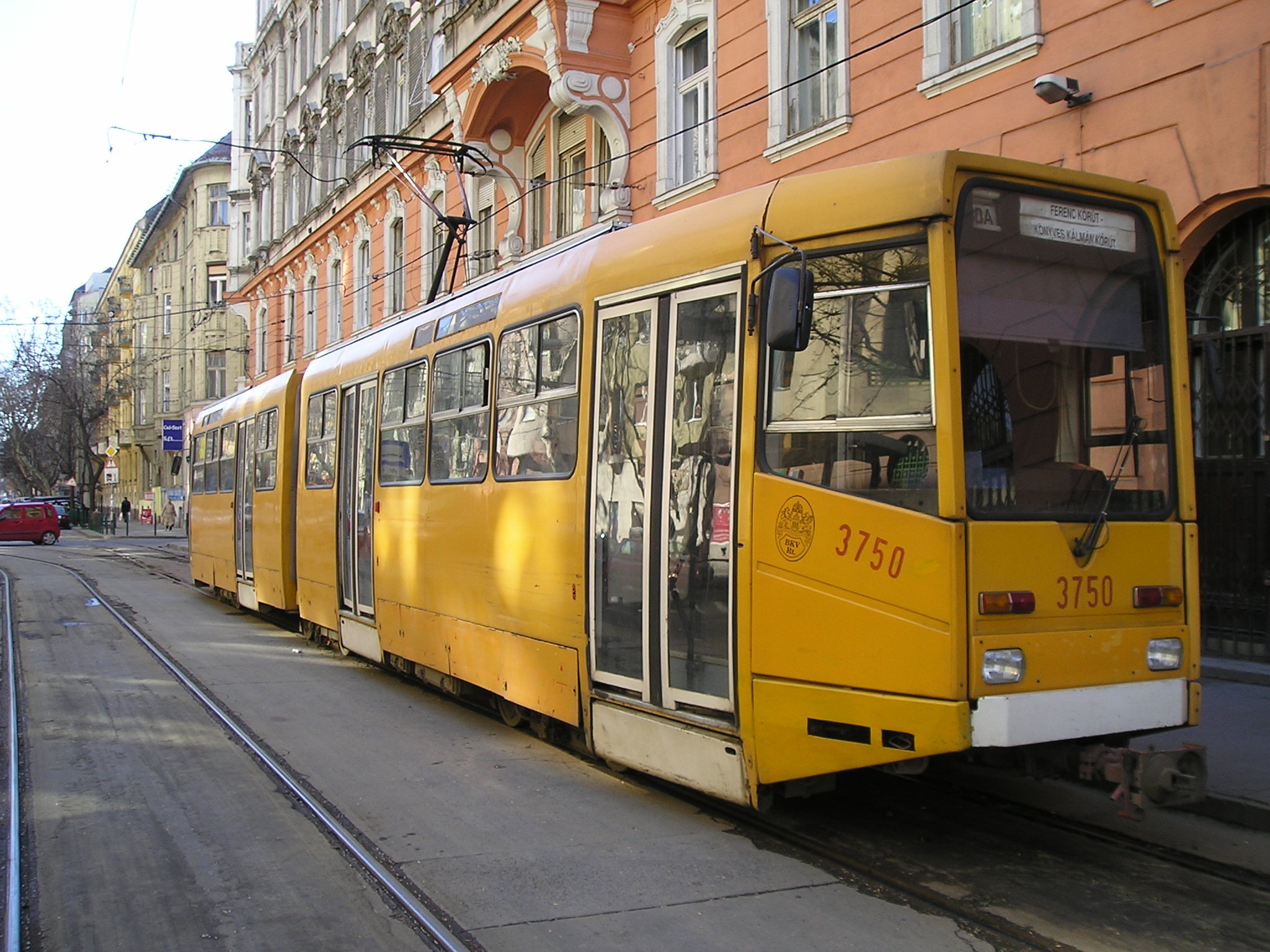
The History of the Budapest Tram Transport

The history of the Budapest tram transport goes back to more than 120 years. It is a long time even in the life of a capital city which is a metropolis in rank and size. It would be hard to imagine all the things the residents of Budapest could see from the tram-windows during all these years. The Great Boulevard under construction, the House of Parliament growing out of the earth on the right side bank of the Danube, new bridges spanning over the river to connect Buda and Pest or the birth of the first underground railway of the Continent. Some years later they could see railway stations blown up, churches in ruins, the Margaret Bridge blown up and its ruins in the water or in 1956 the fights in Corvin Alley
Budapest came into existence in 1873 with the amalgamation of Buda, Pest and Óbuda after the Austro-Hungarian Agreement of Compromise. By the end of the 19th century Budapest became Europe"s youngest metropolis. The number of its residences tripled, the number of its buildings doubled. During the years of the amalgamation the construction of the Margaret Bridge, the second permanent bridge over the Danube, already commenced. With the merger of Pest Public Iron Road Company and Buda Public Iron Road Company, Budapest Public Iron Road Company was born and launched a horse tramway service on the bridge a year later. The Buda side end of the Chain Bridge could be considered a traffic junction as early as these days. In 1866 the streets of Pest were the 6th all over the world to establish horse tramway traffic. By 1885 a network of as many as 15 horse tramway lines were operated. The different lines were distinguished by different flags on the carriages. As time passed, the omnibuses and horse tramways had bigger and bigger difficulties in satisfying the ever increasing travel demands in the quickly growing capital. The monopoly of the Budapest Public Iron Road Company (Bp.K.V.T., later B.K.V.T.) seemed to block progress. The monopoly of the B.K.V.T., however, did not include railways with motor-traction. Lindheim & Partner together with Mór Balázs, the excellent engineer sent in a mutual tender with the professional support of Siemens et Halske for the construction of a public rail road with carriages of electric traction in the city. The city issued a permission for the establishment of a test-line and in September 1887 the Ministry of Commerce and Transport began the licensing process.
As the Municipal Council of Public Projects did not approve the building of overhead catenaries in the inner city, Siemens developed a conduit system.
Hardly seven years lapsed after the first public electric tramway line on earth had been inaugurated on 16th May 1881 in Gross-Lichterfelde near Berlin. The electric tramcars manufactured by Siemens created a great sensation. Due to their success another public tramway system was built in May 1882 near Berlin. The great global electrification wave began only in the 1890s, so we can say without exaggeration that the Budapest tramway belongs to the forefront of the world.
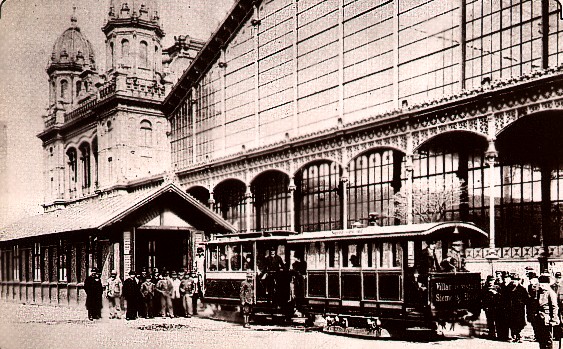 The permission of the ministry for the 1 km long test-line between Nyugati Railway Station and Király Street was issued on 1st October 1887. As early as at the end of the following month it was put into operation. The outstanding event fell on a Monday and the first tram rolled out to the street at half past two. A temporary tram depot was built in front of the Nyugati Railway Station. On the 1000 mm gauge track two motor carriages and a tow-car carried the passengers. The speed limit was set to 10 km/hour, but Andrássy Street had to be crossed at even a lower speed. A mounted policeman was posted there to watch if this speed limit was kept. After dark a white lamp had to be lit at the front of the train and a red lamp at the rear.
The permission of the ministry for the 1 km long test-line between Nyugati Railway Station and Király Street was issued on 1st October 1887. As early as at the end of the following month it was put into operation. The outstanding event fell on a Monday and the first tram rolled out to the street at half past two. A temporary tram depot was built in front of the Nyugati Railway Station. On the 1000 mm gauge track two motor carriages and a tow-car carried the passengers. The speed limit was set to 10 km/hour, but Andrássy Street had to be crossed at even a lower speed. A mounted policeman was posted there to watch if this speed limit was kept. After dark a white lamp had to be lit at the front of the train and a red lamp at the rear.
In 1888 Mór Balázs, Lindheim & Partner and Siemens et Halske founded Budapesti Városi Vasút, BVV (Budapest City Rail Road Co.). The first normal gauge (1435 mm) line of Budapest was put in operation on the route of Egyetem Square - Stáció Street - Köztemető Street. In the same year they handed over a line in Podmaniczky Street, too. BVV demolished the track of the test-railway on the Great Boulevard and built a normal gauge track on its place. By the beginning of March 1890 a section to Kerepesi Street (Rákóczi Street) and by the end of August a section on the Great Boulevard to Üllői Street were opened to public. In the following year the Company under the name of Budapesti Villamos Városi Vasút Rt. i.e. BVVV (Budapest Electric City Railway Ltd.) continued its activity. Mór Balázs became its first general director.
This Company put the first steam-propelled public railway in operation in 1891 on the route of Rókus Hospital - Salgótarjáni Street - Újköztemető.
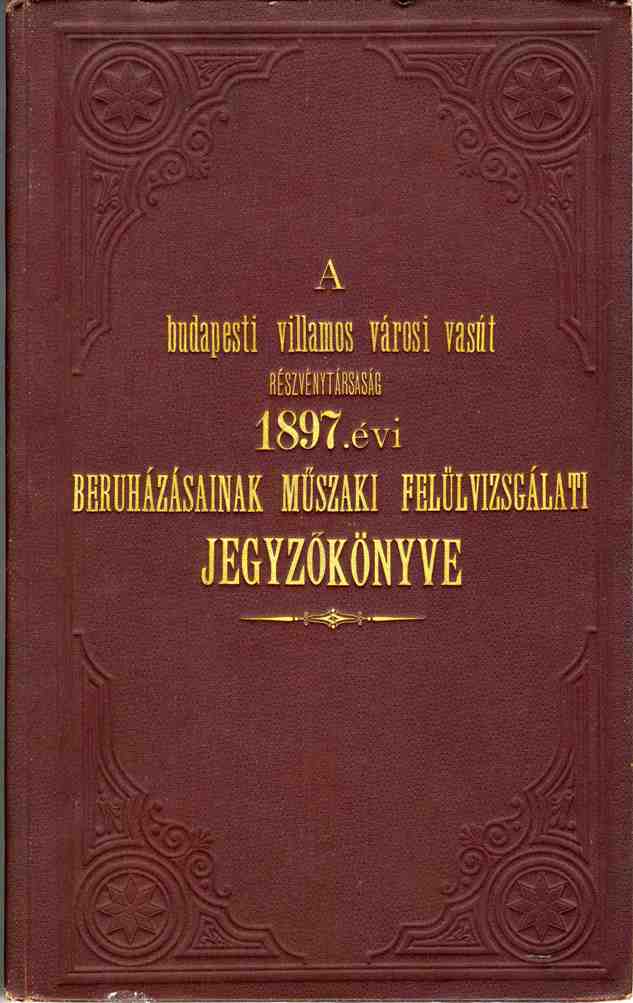 This was the birth of the Budapest tramway. At the beginning of the 20th century there were seven tramway companies in the streets of Budapest to compete for the favour of the passengers (BVVV, BKVV, BURV, BKVT, BBVV, BLVV, BHÉV).
This was the birth of the Budapest tramway. At the beginning of the 20th century there were seven tramway companies in the streets of Budapest to compete for the favour of the passengers (BVVV, BKVV, BURV, BKVT, BBVV, BLVV, BHÉV).
In the last years of World War I there were 1072 electric railroad vehicles in operation in Budapest and on its outskirts. This rolling stock carried more than 382 million passengers in 1918.
 After the war the need of the unification of the capital"s transport emerged in the frequently changing political atmosphere. Budapest Egyesített Városi Vasutak (BEVV, Unified City Railways) introduced unified tariffs, but Budapest Székesfővárosi Közlekedési Rt. (BSZKRT, Budapest Capital City Transport Ltd.) could achieve further results on this field. With the foundation of BSZKRT the leaders of the capital got a greater possibility to realize transport political goals, partly because the leaders of the city were sitting also in the board of the Company.
After the war the need of the unification of the capital"s transport emerged in the frequently changing political atmosphere. Budapest Egyesített Városi Vasutak (BEVV, Unified City Railways) introduced unified tariffs, but Budapest Székesfővárosi Közlekedési Rt. (BSZKRT, Budapest Capital City Transport Ltd.) could achieve further results on this field. With the foundation of BSZKRT the leaders of the capital got a greater possibility to realize transport political goals, partly because the leaders of the city were sitting also in the board of the Company.
In the era between the two world wars BSZKRT put through a number of modernizations, they introduced a unified number system on the vehicles of BKVT and BVVV. As the increasing passenger traffic created a growing demand, even in the first years a number of vehicles gone obsolete were modernized and new vehicles were purchased. In the 1930s development of the maintenance plants, depots and traffic operation plants took place together with the modernization of the traffic operation technology and the network, as well. The economic crisis, the financial state of the country then World War II put off the realization of the great conceptions. During the siege of Budapest - when the Soviet army and the German Wermacht were fighting a desperate battle in the streets of Budapest - the rolling stock, the track network and the facilities suffered enormous damages. 84 per cent of the overhead line network was destroyed. In the devastated streets the first tram started its way even during the fights on 7th February in Pest between the Újpest water tower and Forgács Street. The trams could take passengers between Pest and Buda through Szabadság (Liberty) Bridge only later, from 20th August 1946. The tram was driven by the same man who drove the vehicle which fell into the river on 4th November 1944 when Margaret Bridge was blown up.
 World War II was followed by the years of disunity of the Budapest transport. The most important task of Fővárosi Villamosvasút Községi Vállalat (FVKV) and from 1951 of the Fővárosi Villamosvasút (FVV) was to purchase new vehicles. Legendary types conceived in the minds of the Hungarian designers rolled down from the assembly lines. Besides putting the UV types into operation (after the success of the domestically made carriage type 3720) in 1962 in Füzesi Workshop the first bi-directional articulated tramcar was designed with driver"s cabin at both ends. Also in 1962 new articulated test vehicles were developed from UV types 3235 and 3258. On the basis of a program determined in the 1950s, the old wooden frames of the tramcars were changed to steel frames.
World War II was followed by the years of disunity of the Budapest transport. The most important task of Fővárosi Villamosvasút Községi Vállalat (FVKV) and from 1951 of the Fővárosi Villamosvasút (FVV) was to purchase new vehicles. Legendary types conceived in the minds of the Hungarian designers rolled down from the assembly lines. Besides putting the UV types into operation (after the success of the domestically made carriage type 3720) in 1962 in Füzesi Workshop the first bi-directional articulated tramcar was designed with driver"s cabin at both ends. Also in 1962 new articulated test vehicles were developed from UV types 3235 and 3258. On the basis of a program determined in the 1950s, the old wooden frames of the tramcars were changed to steel frames.
We could draw up a long list of these innovations together with the issues of track construction, maintenance and network development. From this epoch we have to highlight one extremely important event: the revolution of 1956. During the street fights more than two thirds of the overhead lines were destroyed, 109 tramcars were damaged or became completely useless. Hardly ten years after the end of World War II the streets and transport of Budapest were again in a deplorable state.
The municipality council of Budapest Capital City with the merger of four companies (FVV, Fővárosi Autóbuszüzem, Fővárosi Kishajózási Vállalat, Budapesti Helyi Érdekű Vasút, i.e. the tram, bus, boat and suburban railway companies) established Budapesti Közlekedési Vállalat (BKV, i.e. Budapest Transport Company). Thus a new integrated transport company was born.
Today BKV Ltd. is operating in the form of a privately held corporation. The rolling stock of the tram mode consists of the following vehicles: 120 Ganz type, articulated cars, 1 Hungaroplan type, 40 Combinos, 76 TW 6000 Hannover tramcars, 240+80 i.e. 320 vehicles of Tatra T5C5 and T5C5K types are in operation in passenger transport on 24 routes. (Withdrawal of the UVs after 51 years of service was finished in 2007)
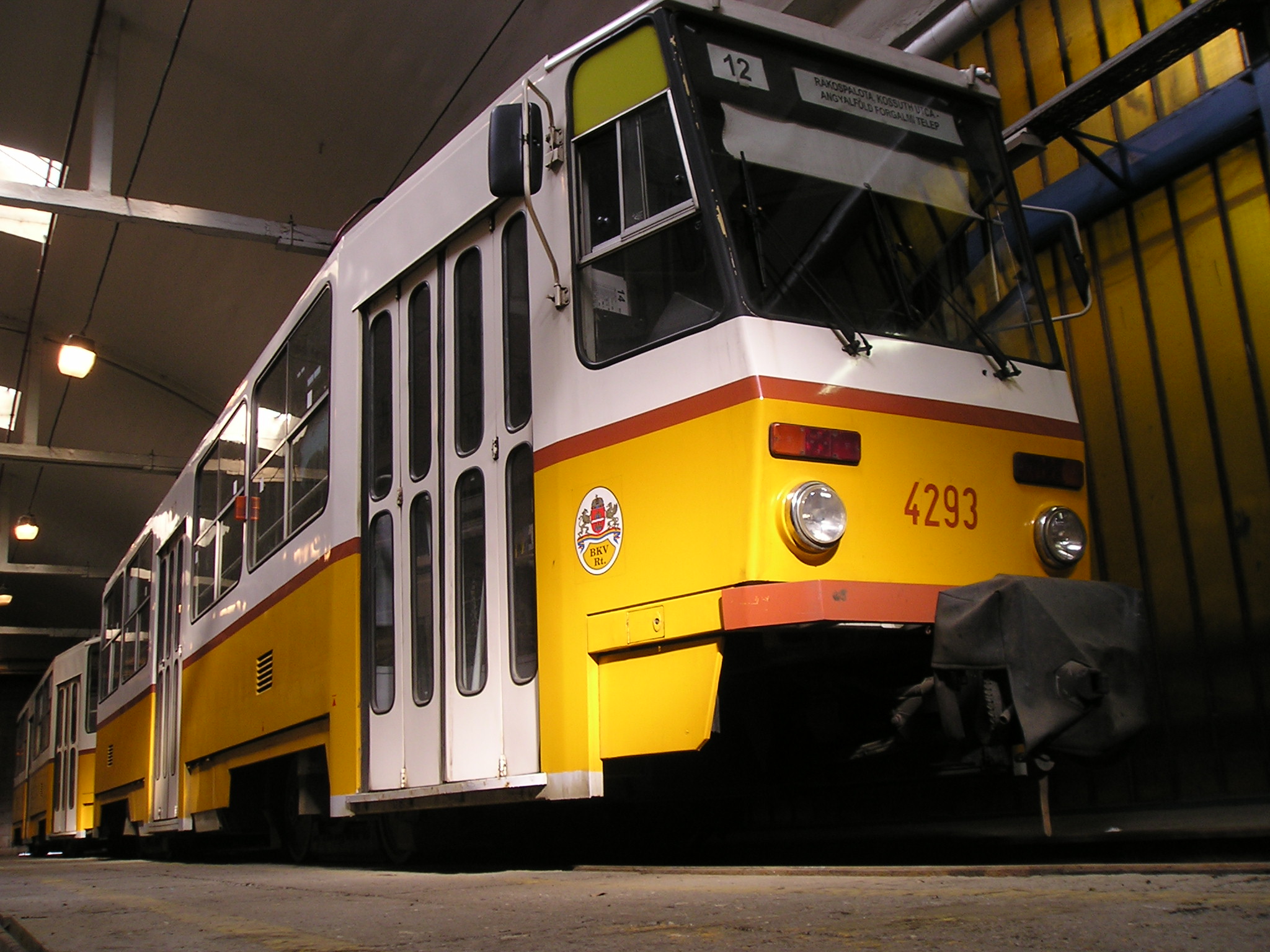
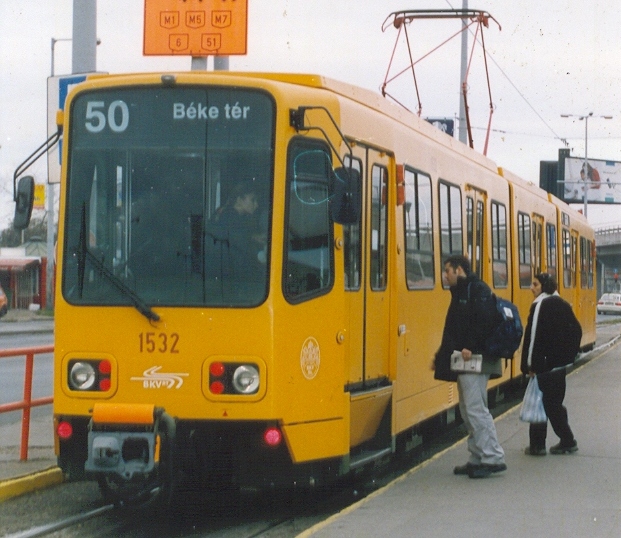

The museums of BKV Ltd. have preserved a number of old tramcars for the succeeding generations. In this brochure you can see pictures of our vehicles renovated faithfully to their epoch and some photos from our archives.




 Magyar
Magyar
 English
English
